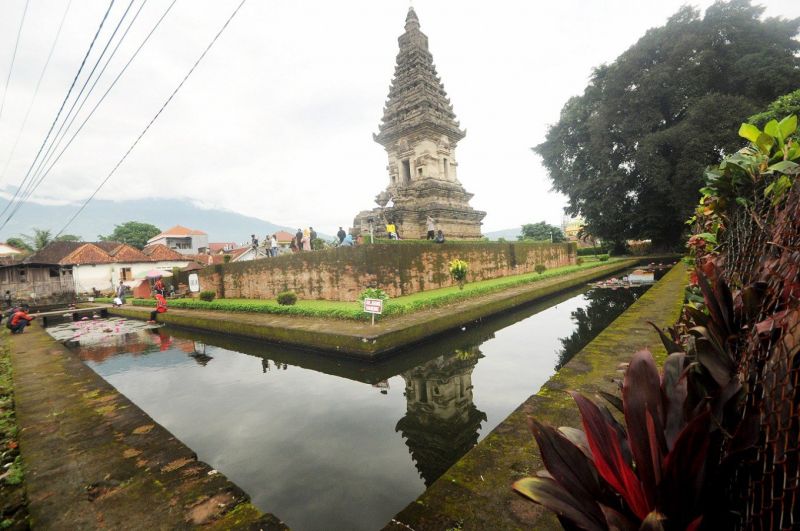The Ancient Legacy of Water Management in Java
Published on by Water Network Research, Official research team of The Water Network in Technology
There are at least four sites with ancient water-management systems located on the 1,653-meter high mountain in Indonesia, popularly known as the Mahameru or Pawitra in ancient Javanese myths.

Multifunction trenches: The water trenches surrounding Jawi Temple function for both religious
and technical purposes. (JP/Nedi Putra AW)
These sites are found in the trenches surrounding Jawi Temple in Prigen subdistrict, the Belahan and Tetek fountains in the Gempol subdistrict, the Jedong site in the Wotanmas village of Ngoro subdistrict and the Jolotundo pool in the Seloliman village of Trawas subdistrict.
“During the times of ancient Hindu and Buddhist kingdoms in Java, water fountains were very crucial as an integral part of religious sites,” M. Dwi Cahyono, an archeologist from Malang State University, said during a recent heritage trail event on ancient water management sites around the mountain.
“For an agriculture-based kingdom, the existence of patirthan [baths and pools] not only served religious purposes but also practically functioned as a water supply for the people’s daily lives, including for watering their paddy fields,”
Dwi said that thorough observations on the ancient sites showed just how thoughtful the ancestors were in developing the water management system, which was efficient, effective and withstood the test of time.
A perfect example of the system is seen in the trenches surrounding Jawi Temple, he added.
Symbolically, Dwi said the trenches represent the ocean surrounding the holy mountain, represented by the temple, which was built by King Kertanegara of the Singosari kingdom in the 13th century.
“At the same time, the trenches, technically speaking, also functioned as a measuring tool for water debit. This, of course, was very important for farmers who wanted to water their paddy fields,” he said.
Meanwhile, according to local tradition, the Belahan and Tetek fountains symbolize the source of life. The water in this site comes out from the nipples of a statue of Sri, the goddess of fertility, which has existed since 1049 AD, the year in which King Airlangga passed away.
In addition to the Sri statue, there is also a statue of Laksmi, a goddess believed in Hinduism to be the mother of the universe. However, unlike the Sri statue, Dwi said, no water bursts from the Laksmi statue as a result of a depleted water source.
Today, locals continue to use the Belahan and Tetek fountains for religious rituals because they consider it a holy site.
While the ancient sites were integral to the locals’ day-to-day lives, Dwi said, they were also important in the conservation of the surrounding forest, which provided separate water sources.
Water has been continuously depleting due to uncontrolled illegal logging and longer dry seasons in recent years, Dwi said, adding that he wanted today’s society and stakeholders to realize that they needed to be wiser in dealing with natural resources.
“The younger generations of today must take notes on the work of our ancestors who successfully developed a sustainable water management system so that we can preserve the water sources that are available today for the future,” Dwi said.
Read more: The Jakarta Post
Media
Taxonomy
- Resource Management
- Agriculture
- Water Resource Management
- Water Management
- Water Resource Management
- Water Management
- Culture